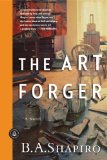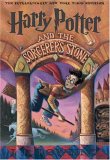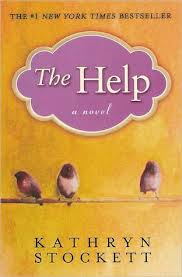Summary | Excerpt | Reading Guide | Reviews | Beyond the Book | Read-Alikes | Genres & Themes | Author Bio

Critics' Opinion:
Readers' Opinion:
First Published:
Oct 2012, 368 pages
Paperback:
May 2013, 384 pages
 Book Reviewed by:
Book Reviewed by:
BookBrowse First Impression Reviewers
Buy This Book
This article relates to The Art Forger
Sometimes, I think, we are under the magical assumption that a writer has an idea, writes a story, then an editor at a publishing house acquires it, and it is published. Four clean, clear steps in a straight forward-moving line.
Sigh. Maybe I should revise that we to an I.
I am a fiction writer. And my process is – well – kind of different from the one above. I get an idea for a story. But then I write part of it, get stuck, cut half of it, write it again, give it to a critique partner to read, take her extensive notes, cut half of it again, then revise what is left. I repeat this part of the process until the story is done. Then my agent sends it out to an editor. I get a rejection. Then another editor, and I get another rejection. I repeat this until the story is sold, or put in a drawer. And if it is sold, then it has to go through the whole process of getting published…
It took B. A. Shapiro eight years to get The Art Forger published. She had already written and sold five novels at that point, but still, she could not find an editor who could and would acquire it. As she says in an interview with Jan Brogan on the blog Jungle Writers Red: "The support of my family and my friends as well as a driving desire to tell stories [kept me going during this dry spell.] It wasn't easy…after five published novels I wrote four more that couldn't find a home. I was thinking about a career change when The Art Forger was acquired by Algonquin Books after many, many rejections by other publishers. I immediately bagged the change idea and started writing a new novel. As far as advice goes, all I can say is that sometimes – not always – but sometimes when you want something badly enough, it can happen. You've just got to get your butt into the chair so that you're there when it strikes."
For Shapiro, the reason editors didn't buy the book was because they couldn't easily categorize it. Many of them loved it, many of them thought it was well-written and well-paced and an interesting story, but they just didn't know where it would neatly fit in their list of books.
The reasons for novels getting rejected are varied, of course. Some are rejected because, as The Art Forger was, they aren't easily placed inside a specific genre. Some are rejected because their form or subject matter is too challenging for the times. Some are simply rejected because they are too similar to another book on an editor's list, or they are not a style of book that the publishing house leans toward, or, of course, they need one (or two or three!) more goes at revision.
Whatever the case, many now-famous, best-selling books were rejected many times before they were sold:


So what am I to do? What is a blossoming writer to do? And truly, what is any person who is following his or her passion to do? I leave you with this advice from Kathryn Stockett: "The point is, I can't tell you how to succeed. But I can tell you how not to: Give in to the shame of being rejected and put your manuscript—or painting, song, voice, dance moves, [insert passion here]—in the coffin that is your bedside drawer and close it for good. I guarantee you that it won't take you anywhere. Or you could do what this writer did: Give in to your obsession instead."
Here's to our obsessions.
And don't forget about bad reviews once a book is actually bought and published.
Tamara Smith
Filed under Books and Authors
![]() This "beyond the book article" relates to The Art Forger. It originally ran in October 2012 and has been updated for the
May 2013 paperback edition.
Go to magazine.
This "beyond the book article" relates to The Art Forger. It originally ran in October 2012 and has been updated for the
May 2013 paperback edition.
Go to magazine.





The Flower Sisters
by Michelle Collins Anderson
From the new Fannie Flagg of the Ozarks, a richly-woven story of family, forgiveness, and reinvention.

The House on Biscayne Bay
by Chanel Cleeton
As death stalks a gothic mansion in Miami, the lives of two women intertwine as the past and present collide.

The Funeral Cryer by Wenyan Lu
Debut novelist Wenyan Lu brings us this witty yet profound story about one woman's midlife reawakening in contemporary rural China.
Your guide toexceptional books
BookBrowse seeks out and recommends the best in contemporary fiction and nonfiction—books that not only engage and entertain but also deepen our understanding of ourselves and the world around us.